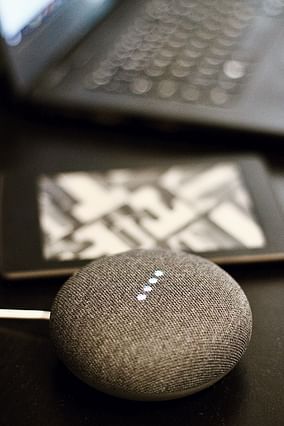
Smart Home Accessibility: Making Your Home Inclusive with Automation
The concept of a smart home has become increasingly popular over the years as homeowners continue to look for more ways to improve their living spaces. But have you considered how smart home technology can make your home more accessible and inclusive for people with disabilities or special needs? In this article, we'll explore smart home accessibility solutions that can help enhance the independence and quality of life for everyone in your household.
Smart Door Openers
For people with mobility impairments, opening and closing doors can be a challenge. However, with a smart door opener, you can easily control your doors using your smartphone, voice commands, or motion sensors. Smart door openers also make it possible to unlock your door remotely to allow caregivers or helpers to access your home, which is especially helpful for people with limited mobility or visual impairments.
Voice Control
Voice control is a convenient feature that allows you to control various aspects of your smart home using voice commands. This feature can be especially useful for people with mobility or visual impairments, who may find it difficult to use traditional controllers or switches. With voice control, you can turn on lights or adjust the temperature without needing to physically interact with any devices. Most smart home systems, such as Google Home or Amazon's Alexa, offer voice control as a built-in feature, so you can easily set it up with your existing devices.
Automation Routines
Automation routines can save time and make your life easier by automating daily tasks. For people with disabilities or special needs, automation routines can be a game-changer. For example, you can set up a routine that turns on the lights and adjusts the temperature in a specific room as soon as you enter it. You can also set up routines to remind you to take medication, turn off appliances, or even lock the front door. These routines can be controlled using your smartphone, voice commands, or motion sensors, depending on your preferences.
Smart Home Devices for People with Special Needs
If you or someone in your household has special needs, there are several smart home devices that can help make life easier. For example, there are smart watches designed specifically for people with visual or hearing impairments that can display notifications or vibrate to alert the wearer of incoming calls or messages. Smart thermostats can be programmed to adjust the temperature according to individual preferences, which is especially helpful for people with sensory processing disorders. Smart lighting systems can also be adjusted to provide optimal lighting conditions for people with visual impairments or light sensitivities.
Conclusion
Smart home technology offers endless possibilities for improving your living space, and it can be especially beneficial for people with disabilities or special needs. From smart door openers to automation routines, there are many features and devices that can make your home more inclusive and accessible. Embrace smart home accessibility solutions today to enhance the independence and quality of life for everyone in your household.
Posted on: Apr 15, 2023